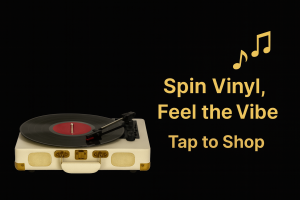Some songs make you move. This one changed everything.
Let’s Dance wasn’t just another hit—it was a reinvention.
With its mix of funk, rock, and pop, it introduced Bowie to a new generation while keeping his signature artistry intact.
More than just a dance track, it carries layers of meaning, energy, and cultural influence, proving why Bowie remains one of the greatest classic rock artists of all time.
📝 Background & Meaning:
“Let’s Dance” was written by David Bowie and produced in collaboration with Nile Rodgers of Chic fame. Released as the lead single from Bowie’s fifteenth studio album, Let’s Dance, in 1983, the song became one of David Bowie’s biggest commercial hits, reaching #1 on the Billboard Hot 100 and topping charts worldwide.
The track marked a dramatic shift in Bowie’s sound, embracing funk, soul, and dance influences rather than his earlier experimental art rock. Collaborating with Nile Rodgers brought a polished, radio-friendly production style while maintaining Bowie’s signature artistry.
Lyrically, “Let’s Dance” is often interpreted as an invitation to freedom, self-expression, and uninhibited joy. However, Bowie layered the song with subtle depth. Beneath the surface-level celebration of dance and nightlife lies a commentary on cultural tension, social inequality, and fleeting connections in a consumer-driven society.
The accompanying music video, shot in Australia, highlighted themes of social injustice and the exploitation of indigenous people, providing a sharp contrast to the song’s upbeat vibe.
🎤 Key Themes:
- Celebration and Dance: The song captures the joy, liberation, and connection found on the dance floor.
- Cultural Commentary: The music video and subtext address colonialism, social disparity, and cultural exploitation.
- Romantic Connection: The lyrics hint at intimacy and vulnerability through dance as a metaphor for human connection.
- Transformation: It marked a pivotal reinvention for Bowie, embracing a more mainstream, pop-oriented sound.
🎧 Notable Lyrics:
“Let’s dance / Put on your red shoes and dance the blues.”
- Represents escapism through music and dance, suggesting a temporary reprieve from life’s hardships.
“If you say run, I’ll run with you / If you say hide, we’ll hide.”
- Evokes deep emotional connection and vulnerability in a relationship.
“Because my love for you / Would break my heart in two.”
- A hint of romantic desperation masked under the upbeat sound of the track.
🎸 Musical Highlights:
- Funky Guitar Riff: Nile Rodgers’ signature clean, funky guitar lines provide the song’s backbone.
- Stevie Ray Vaughan’s Guitar Solo: The late Stevie Ray Vaughan contributed a blues-infused guitar solo, adding grit and texture to the polished sound.
- Polished Production: The collaboration with Nile Rodgers gave the song a crisp, danceable quality perfect for radio.
- Layered Vocals: Bowie’s charismatic vocal delivery balances the celebratory and introspective tones.
- Dynamic Rhythm Section: A steady, driving beat keeps the song danceable and infectious.
🌍 Cultural Impact:
- “Let’s Dance” became one of David Bowie’s most commercially successful songs, introducing him to a broader mainstream audience.
- The song’s cross-genre appeal made it a defining track of the 1980s music scene.
- The accompanying music video, featuring Aboriginal actors in Australia, sparked discussions about cultural exploitation and inequality.
- It’s a dance floor staple, still regularly played at parties, clubs, and events.
- The track helped establish Nile Rodgers’ reputation as one of the most influential producers in pop music.
🎤 “Let’s Dance” Fun Fact:
- David Bowie specifically chose Nile Rodgers to produce the song after hearing “Good Times” by Chic.
- Stevie Ray Vaughan was relatively unknown at the time but was personally handpicked by Bowie after hearing him play.
- The famous “red shoes” in the lyrics are a metaphor for freedom, joy, and self-expression.
🔑 What It Represents:
“Let’s Dance” isn’t just a pop song—it’s a multilayered masterpiece blending danceable grooves, sharp social commentary, and Bowie’s unparalleled charisma.
It represents:
- David Bowie’s reinvention as a global pop superstar.
- The transformative power of dance and music.
- A fusion of funk, rock, and pop that defined the 1980s sound.
- The juxtaposition of joyous music with deeper societal themes.
With its infectious rhythm, iconic guitar riffs, and socially conscious undertones, “Let’s Dance” remains a timeless anthem of celebration, introspection, and artistic brilliance. 🎶🕺🌟
🎶 Why It Still Resonates Today
Music evolves, but Let’s Dance still feels fresh.
Its hypnotic groove, sleek production, and unforgettable guitar work make it a song that can still fill dance floors.
Beyond the beat, it’s a track with depth, touching on freedom, love, and hidden struggles beneath the surface.
Bowie’s ability to fuse genres made this song stand out, blending funk, rock, and electronic sounds in a way that continues to influence modern artists.
The themes of self-expression and movement give it a timeless feel, making it as powerful now as when it first topped the charts.
🔚🎶🔥 Closing Statement
Some songs fade into history, but Let’s Dance keeps pulling people back to the dance floor.
It’s a bold, electrifying mix of rhythm and meaning, proving that great music doesn’t just entertain—it transforms.
Put on your red shoes and let the music take over. 🎤🕺🔥

